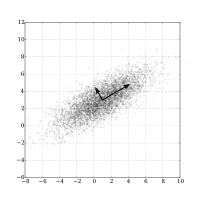
Photo from wikipedia
Abstract This research proposes an ensemble method for synergistically combining multiple empirical algorithms to better estimate chlorophyll-a (Chl-a) concentration. In previous studies, different empirical algorithms have been employed separately and… Click to show full abstract
Abstract This research proposes an ensemble method for synergistically combining multiple empirical algorithms to better estimate chlorophyll-a (Chl-a) concentration. In previous studies, different empirical algorithms have been employed separately and a single algorithm was often identified as the most suitable predictor for Chl-a retrieval. Our ensemble method combines different individual algorithms to form an ensemble predictor that exploits advantages of each individual algorithm to maximize the overall estimation accuracy. We evaluated two ensemble predictors: the optimally weighted ensemble predictor and the spectral space partition guided ensemble predictor. The ensemble method has been successfully applied to a Sentinel-2A multispectral image acquired over Harsha Lake, Ohio in 2016. Based on in situ water reference data and satellite imagery, we constructed two ensemble predictors that consist of three individual empirical algorithms/estimators, including 2BDA (two-band algorithm), 3BDA (three-band algorithm), and NDCI (Normalized Difference Chlorophyll Index). For the optimally weighted ensemble predictor, the weights for individual algorithms are computed by solving an overdetermined linear system with the pseudoinverse technique. For the spectral space partition guided ensemble predictor, the rules for partitioning spectral space into spectral regions were established as a decision-tree using the CART method. The optimal Chl-a estimate for a pixel is obtained by selectively using the empirical algorithm in the ensemble that has the highest expected accuracy in the spectral region where the pixel is located. Our assessments suggest that the spectral space partition guided ensemble method performs significantly better than three individual empirical algorithms and also better than the optimally weighted ensemble method.
Journal Title: Journal of Great Lakes Research
Year Published: 2019
Link to full text (if available)
Share on Social Media: Sign Up to like & get
recommendations!